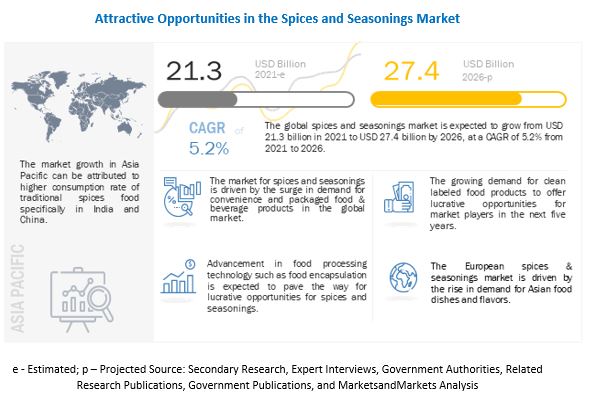
Spices and seasonings have been an integral part of the culinary world for centuries. The term ‘spices’ refers to the dried parts of plants, including roots, seeds, fruits, and bark, that are used to add flavor, aroma, and color to food. On the other hand, ‘seasonings’ are a combination of spices, herbs, and other flavoring agents that enhance the taste of food. Spices and seasonings are used in various cuisines around the world, providing unique flavors and textures to dishes.
The use of spices and seasonings dates back to ancient times. The Egyptians, Greeks, and Romans used spices for their medicinal properties and in religious ceremonies. The spice trade was one of the earliest forms of international trade, with spices like cinnamon, cloves, and pepper being highly valued in Europe during the Middle Ages. Today, the global spices and seasonings market is a multi-billion-dollar industry that continues to grow.
Market Overview
The global spices and seasonings market is estimated to be valued at USD 21.3 billion in 2021. It is projected to reach USD 27.4 billion by 2026, recording a CAGR of 5.2% during the forecast period. Globally, the spices & seasonings market is driven by the growing demand for convenience food products, clean label trends, and natural preservatives for the meat industry.
Market Dynamics
The spices and seasonings market is driven by several factors, including changing consumer tastes, the growing popularity of ethnic cuisine, and the increasing demand for convenience food. The market is also influenced by factors such as the rise of the foodservice industry and the growth of the retail sector.
One of the major trends in the spices and seasonings market is the growing demand for ethnic flavors and ingredients. As consumers become more adventurous in their culinary tastes, they are seeking out new and exotic flavors from around the world. This has led to an increase in the popularity of spices and seasonings such as turmeric, cumin, coriander, and cardamom.
Another trend that is driving the market is the rising demand for natural and organic products. Consumers are increasingly concerned about the use of synthetic chemicals and additives in food products, and are seeking out natural and organic alternatives. This has led to a growing demand for spices and seasonings that are certified organic or non-GMO.
The market is also being driven by increasing awareness about the health benefits of using spices and seasonings in cooking. Many spices and seasonings are known to have anti-inflammatory, antioxidant, and antimicrobial properties, and can help to improve digestion and boost the immune system. As consumers become more health-conscious, they are looking for ways to incorporate these ingredients into their diets.
Challenges and Opportunities of Spices and seasonings market
- One of the major challenges facing the spices and seasonings market is the changing consumer preferences. Consumers are increasingly demanding healthier and more natural products with fewer additives and preservatives. This trend is driving demand for organic and all-natural spices and seasonings. To meet this demand, companies in the industry must develop new products and reformulate existing ones to meet these changing needs.
- Another challenge facing the market is intense competition. The market is highly fragmented with many small and large players competing for market share. In addition, the industry is characterized by low barriers to entry, which means that new players can easily enter the market and compete with established players. To remain competitive, companies must differentiate their products through innovative packaging, unique flavors, and other value-added features.
- Despite these challenges, there are several opportunities that can be leveraged to grow the spices and seasonings market. One of the most significant opportunities is the growing demand for ethnic and exotic flavors. As consumers become more adventurous with their food choices, they are seeking out new and unique flavors from around the world. Companies that can develop and market these flavors effectively can gain a significant competitive advantage.
- Another opportunity for the industry is the growing popularity of home cooking and meal preparation. As more consumers cook at home, they are looking for high-quality ingredients and spices to enhance the flavor of their meals. Companies that can provide high-quality, convenient, and affordable spices and seasonings that meet the needs of home cooks will be well-positioned for growth.
Conclusion
In conclusion, the spices and seasonings market is a diverse and evolving industry that offers numerous opportunities for growth and profitability. While there are challenges such as changing consumer preferences, intense competition, and supply chain disruptions, these can be overcome by innovative and strategic approaches. The growing demand for ethnic and exotic flavors, as well as the increasing popularity of home cooking and meal preparation, present significant opportunities for companies to differentiate their products and gain market share. By staying attuned to the changing needs and preferences of consumers and developing new and innovative products, companies in the spices and seasonings market can thrive and continue to grow in the years ahead.
